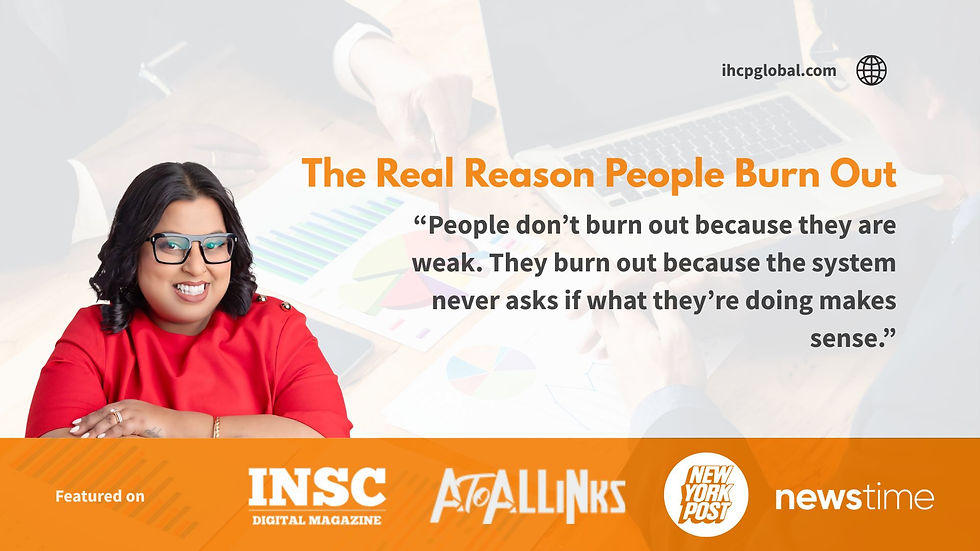Burnout Is Not an Individual Failure. It is a Design Flaw.
- Anwesha Mukherjee
- Aug 1
- 2 min read

For years, I believed burnout was something I had to fix on my own.
Work smarter.
Sleep more.
Set firmer boundaries.
That is what all the books and blogs said.
But here is what no one told me: It is not always about you.
Over the past decade, working with organizations across sectors, from global firms to municipal departments; I have seen a pattern again and again:
Burnout isn’t about individual capacity.
It is about systemic neglect.
People aren’t exhausted because they are fragile.
They are exhausted because the systems around them were built to demand effort… not reflect on whether that effort is doing anything meaningful.
What It Looks Like on the Ground
In one transformation program, we noticed something odd. Engagement was decent. Delivery timelines were met. But teams looked drained. Conversations felt flat.
We started asking:
“What did this week take from you? And what did it give back?”
That led to a simple 10-minute ritual after every major sprint.A reset window. A space to reflect. Not perform.
Within weeks:
Teams reported more clarity around their work
Managers stopped praising “who stayed late” and started noticing “who unblocked others”
Energy returned and not as cheerleading, but as ownership
No tool did that.
A small shift in how we paused did.
The Real Cost of Ignoring It
Burnout shows up in subtle ways:
Passive approval in meetings
Quiet quitting dressed up as “just doing my part”
High performers leaving without warning
And most organizations respond with resilience toolkits.
But what people actually need is clarity, care, and coherence.
How We Address It at IHCP
In our consulting work, burnout is a design signal, not a personnel issue.
Using the BRIDGE™ framework, we help organizations:
Baseline where energy is leaking (workflows, role ambiguity, leadership noise)
Reframe feedback into design questions “What would support look like?”
Engage leaders in modeling recovery, not just pushing performance
The goal isn’t to slow people down. It is to stop pretending that constant effort equals value.
When teams are invited to reflect; even briefly; they unlock something more sustainable than drive:
Direction.
Final Thought
If you have ever blamed yourself for feeling tired, disengaged, or numb at work; you are not the problem. And you are not alone.
The good news?
We can design better.
Not just better tools.
But better ways to work with humans in mind.




Comments